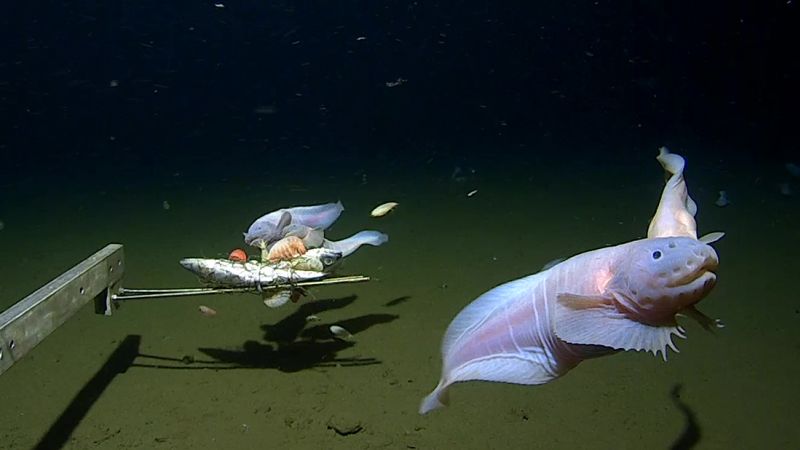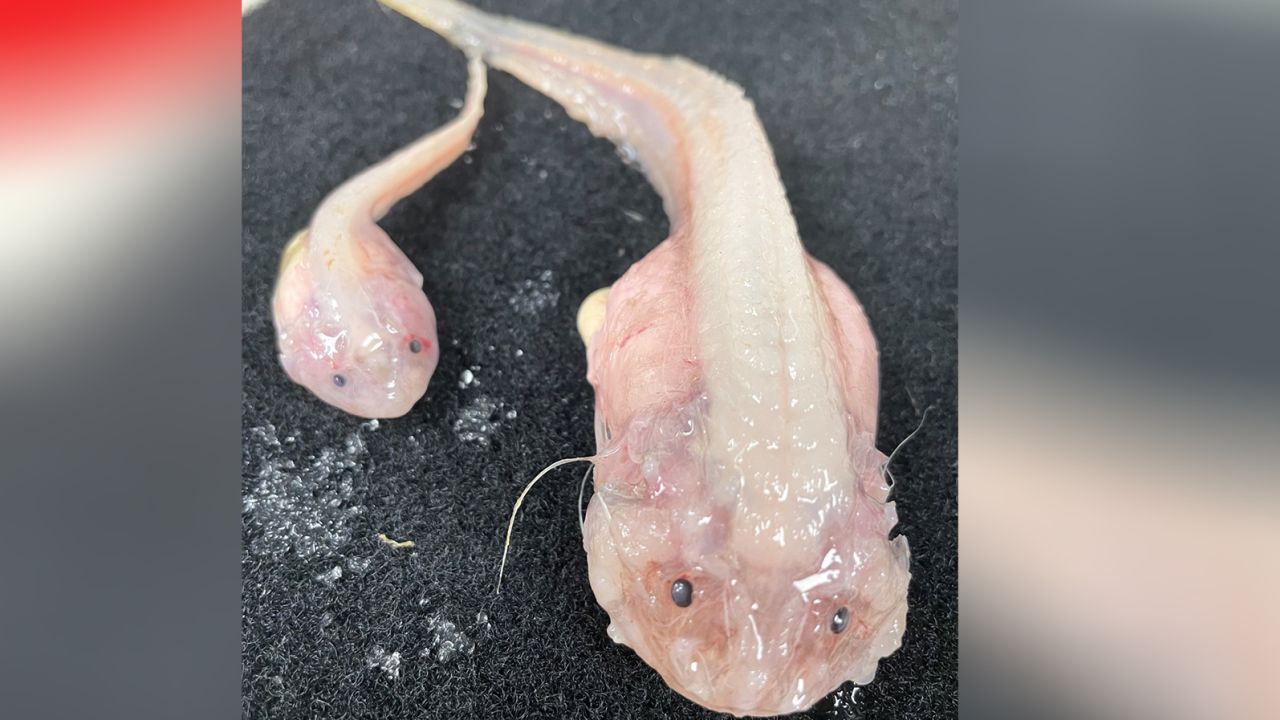
Sign up for CNN’s Wonder Theory science newsletter. Explore the universe with news on fascinating discoveries, scientific advancements and more.
CNN
—
Cruising at a depth of 8,336 meters (over 27,000 feet) just above the seabed, a young snailfish has become the deepest fish ever filmed by scientists during a probe into the abyss of the northern Pacific Ocean.
Scientists from University of Western Australia and Tokyo University of Marine Science and Technology released footage of the snailfish on Sunday filmed last September by sea robots in deep trenches off Japan.
Along with the filming the deepest snailfish, the scientists physically caught two other specimens at 8,022 meters and set another record for the deepest catch.
Previously, the deepest snailfish ever spotted was at 7,703 meters in 2008, while scientists had never been able to collect fish from anywhere below 8,000 meters.
“What is significant is that it shows how far a particular type of fish will descend in the ocean,” said marine biologist Alan Jamieson, founder of the Minderoo-UWA Deep Sea Research Centre, who led the expedition.

Scientists are filming in the trenches off Japan as part of a 10-year study into the deepest fish populations in the world. Snailfish are members of Liparidae family, and while most snailfish live in shallow water, others survive at some of the greatest depths ever recorded, Jamieson said.
During the two-month survey last year, three “landers” – automatic sea robots fitted with high-resolution cameras – were dropped into three trenches – the Japan, Izu-Ogasawara and Ryukyu trenches – at varying depths.
In the Izu-Ogasawara trench, footage showed the deepest snailfish hovering calmly alongside other crustaceans on the seabed.
Jamieson classified the fish as a juvenile and said younger deep sea snailfish often stay as deep as possible to avoid being eaten by bigger predators that swim at shallower depths.
Another clip shot at between 7,500 and 8,200 meters in the same trench showed a colony of fish and crustaceans munching at bait tied to an undersea robot.
Images of the two captured snailfish – identified as Pseudoliparis belyaevi – provide a rare glimpse of the unique features that help the deep sea species survive the extreme environment.
They have tiny eyes, a translucent body, and their lack of swim bladder, which helps other fish float, works to their advantage, Jamieson said.
The professor said the Pacific Ocean is particularly conducive to vibrant activity due to its warm southern current, which encourages sea creatures to go deeper, while its abundant marine life provides a good source of food for bottom feeders.
Scientists would like to know more about creatures living at extreme depths, but cost is the constraint, Jamieson said, adding that each lander alone costs them $200,000 to assemble and operate.
“The challenges are that technology has been expensive and scientists don’t have a lot of money,” he said.
